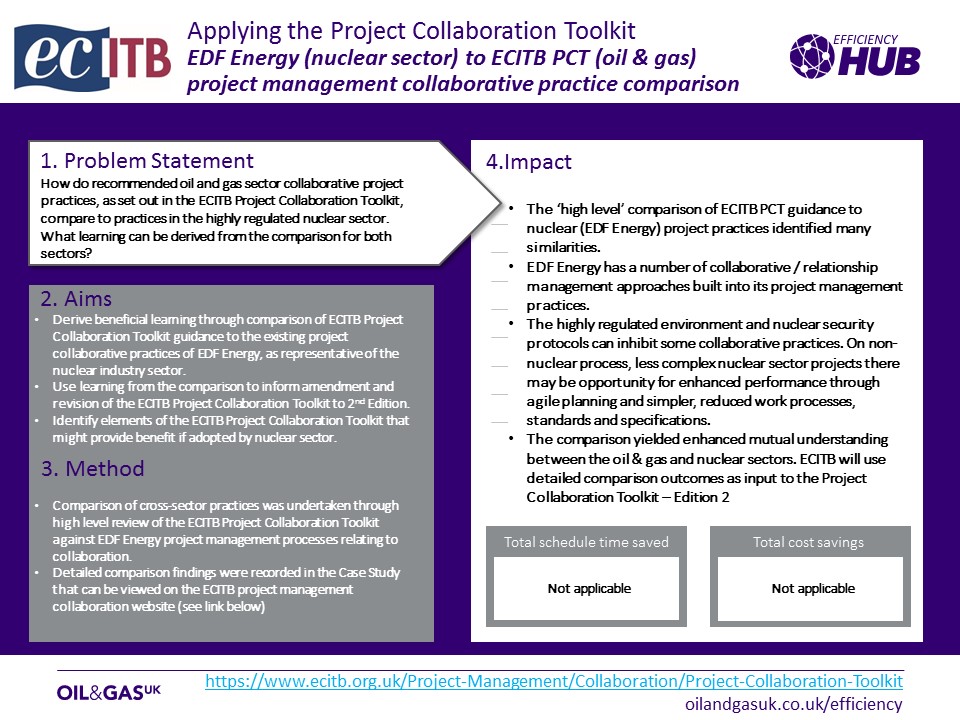ECITB – Applying the Project Collaboration Toolkit EDF Energy (nuclear sector) to ECITB PCT (oil & gas) project management collaborative practice comparison
Problem Statement
How do recommended oil and gas sector collaborative project practices, as set out in the ECITB Project Collaboration Toolkit, compare to practices in the highly regulated nuclear sector. What learning can be derived from the comparison for both sectors?
Aims
- Derive beneficial learning through comparison of ECITB Project Collaboration Toolkit guidance to the existing project collaborative practices of EDF Energy, as representative of the nuclear industry sector.
- Use learning from the comparison to inform amendment and revision of the ECITB Project Collaboration Toolkit to 2nd Edition.
- Identify elements of the ECITB Project Collaboration Toolkit that might provide benefit if adopted by nuclear sector.
Method
- Comparison of cross-sector practices was undertaken through high level review of the ECITB Project Collaboration Toolkit against EDF Energy project management processes relating to collaboration.
- Detailed comparison findings were recorded in the Case Study that can be viewed on the ECITB project management collaboration website (see link below)
- The ‘high level’ comparison of ECITB PCT guidance to nuclear (EDF Energy) project practices identified many similarities.
- EDF Energy has a number of collaborative / relationship management approaches built into its project management practices.
- The highly regulated environment and nuclear security protocols can inhibit some collaborative practices. On non-nuclear process, less complex nuclear sector projects there may be opportunity for enhanced performance through agile planning and simpler, reduced work processes, standards and specifications.
- The comparison yielded enhanced mutual understanding between the oil & gas and nuclear sectors. ECITB will use detailed comparison outcomes as input to the Project Collaboration Toolkit – Edition 2
Click on the image above to download the case study.




